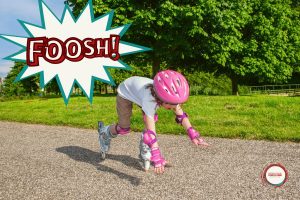
With the ongoing restrictions on travel and going abroad, many of us will be flocking to one of the many UK seaside resorts for our summer break this year. If you are anything like me, you will be thinking of ways to stay some-what fit over your holiday. Planning what type of exercise I can do whilst I’m there, lead me to put together this simple Beach HIIT workout programme.
I have been lucky enough to live in a seaside town during the pandemic. Over this time I have noticed that activities such as outdoor yoga, and sand workouts have become even more popular. Mainly due to the continued limitations on indoor group exercise. This has even continued as we move to back to a more ‘normal’ way of life. The pandemic has shown a lot of people the benefis of outdoor exercise. So here’s a simple beach HIIT workout programme I used while staying at the seaside.
Beach HIIT Workout Programme
Warm Up
Exercising on the beach, be it on sand or stones, requires more from some of your muscles due to the surface you are on being less stable and less firm. Therefore it is imperative you warm up sufficiently, particularly for muscles such as your hip flexors, Quadriceps, Hamstrings, and Calves.
Before you exercise, it is advisable to do ‘dynamic stretches’ rather than ‘static stretches’. You can download a more detailed version of the Beach HIIT Workout Programme, which includes a warm up, and beginner, intermediate and Advanced programmes.
EXERCISES:
- 1 – Squats
- 2 – Press Ups
- 3 – Plank
- 4 – Lunges or Switch Jumps
- 5 – Jumping Jacks or Burpees
- 6 – Sit Ups
- 7 – Bear Crawl
- 8 – Sprint Shuttles
Work for between 20 and 30 seconds with between a 20 and 10 second transition time between exercises. Adjust according to how experienced you are with HIIT training. Again for more guidance download the more detailed version of our Beach HIIT Workout Programme.
Start Slow
Again, if you are not used to exercising on a beach, always start off gently for your first session. If you find that afterwards you do not feel too tired or that you could have worked harder, push it further next time.
What are the Benefits of Training on Sand?
If you are not used to exercising on sand, wearing trainers may provide you with more support and stability. However, if you have a tendon injury in your foot or achilles then walking, running and jumping on sand is good for it. The properties of sand as you step, essentially reduce the peak torque produced, smoothing out the stress profile. Thus reducing impact on the tendon. This allows you to stress it more with a lesser reaction. Note: this needs to be in dry or semi-wet sand that gives under your feet.
Other things to consider:
Be aware of your surroundings – of course we must be mindful of others around us. For example, don’t have music playing too loudly, avoid being too close to other people. Be sure to take everything you came with away with you. That is food/drink containers, rubbish, etc. Look out for potential hazards in the sand/stones, before choosing your spot. Such things as glass, sharp shells, driftwood. Finally, always be sure to check the tide times and sea conditions. Always prepare suitably for the sun even when it isn’t particularly sunny. Wear a hat and sunglasses, use suncream, and drink plenty of water.
Tips and Tricks:
For the weighted squats you can use stones or driftwood from the beach. Be careful if you decide to use weights – only use objects that have a weight similar to that which you are used to using. Perhaps start off with something even lighter, especially if it’s an awkward shape. If you do go looking for that big rock on the beach, make sure it is not too big or awkward in shape. It should be such that you can hold it close to your body. Alternatively, you can also use a bucket as a weight and fill it with sand or water.
Look for a relatively flat part of the beach. If there is a slope run/exercise in the direction of the slope being uphill or downhill. Use the softer sand for a harder workout and to help any tendon problems.
If you’d like some simple tips on running safely then check out our Video Series from Laura Fidler. Laura is one of our running specialist physio’s who has competed internationally in triathlon. The video series offers an insight into her expertise on all things running. It’s well worth a watch!
In Conclusion:
The beach is a great workout location, offering fresh air, lots of space, free vitamin D, and plenty of options for all abilities. Not to mention the water to cool off in when you are done. But be sure to do it safely, to make the most of your session, and make the most of your holiday!





Comments